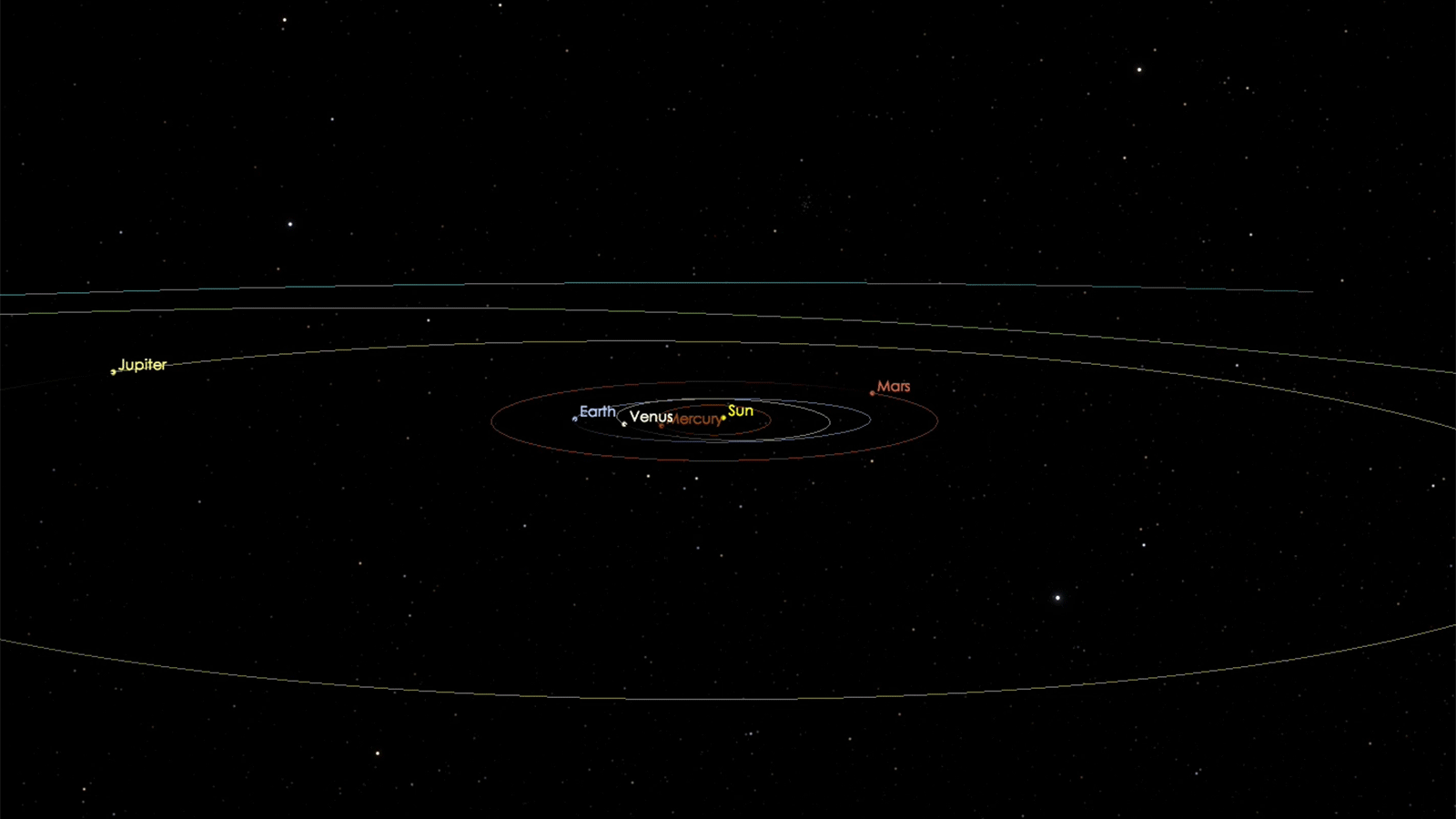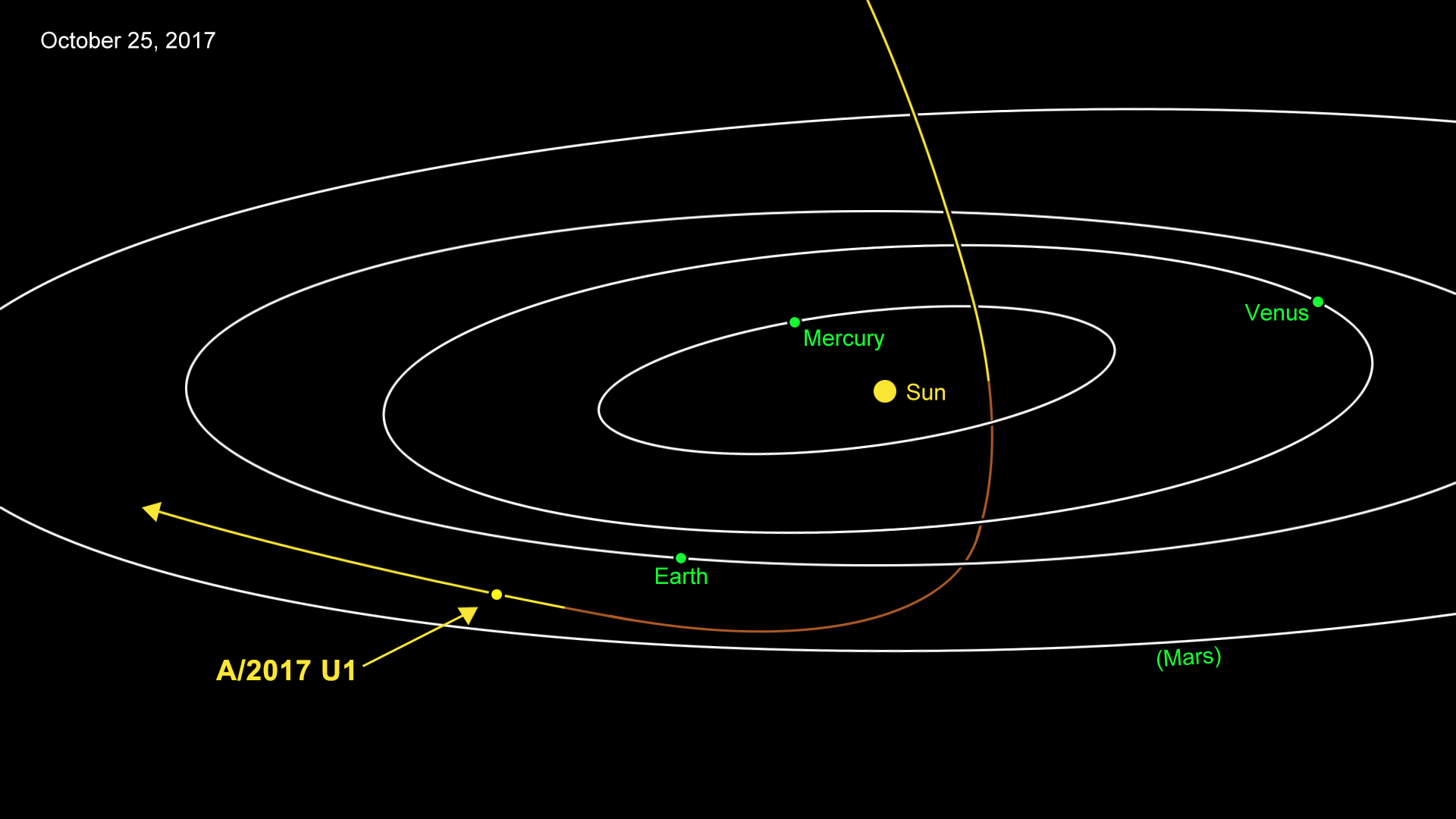Visitor from Far, Far Away: Interstellar Object Spotted in Our Solar System

A visitor from interstellar space has likely been spotted in our solar system for the first time ever.
The object, known as A/2017 U1, was detected last week by researchers using the Pan-STARRS 1 telescope in Hawaii.
"We have been waiting for this day for decades," Paul Chodas, manager of the Center for Near-Earth Object Studies at the NASA's Jet Propulsion Laboratory in Pasadena, California, said in a statement. [Solar System Explained from the Inside Out (Infographic)]
"It's long been theorized that such objects exist — asteroids or comets moving around between the stars and occasionally passing through our solar system — but this is the first such detection," Chodas added. "So far, everything indicates this is likely an interstellar object, but more data would help to confirm it."
Chodas and other researchers base this preliminary conclusion on A/2017 U1's hyperbolic orbit — the fact that its path is taking the body out of the solar system. Other hyperbolic objects have been spotted before, but they were nudged onto escape trajectories by gravitational interactions with planets, said Matthew Holman, director of the Minor Planet Center in Cambridge, Massachusetts, the organization responsible for collecting data about asteroids and comets in our solar system.
A/2017 U1 has had no such close encounters, Holman added. Outgassing could theoretically also push a comet onto a hyperbolic path, but that doesn't seem to be the case with A/2017 U1, either, he said.
"All other plausible solutions don't work out," Holman told Space.com. "So you're left with, this thing came from elsewhere."
Get the Space.com Newsletter
Breaking space news, the latest updates on rocket launches, skywatching events and more!

It's unclear what exactly this thing is. When A/2017 U1 was first spotted, it was thought to be a comet (and was therefore given the moniker C/2017 U1). But further observations have revealed no evidence of a coma — the fuzzy cloud of gas and dust surrounding a comet's core — so the object's name was amended to its current asteroidal designation.
Still, Holman said he suspects that A/2017 U1 is more ice than rock. That's because the stuff that forms relatively far from stars, and is most likely to be booted out of solar systems into interstellar space, tends to be ice-dominated. (Holman also noted that comets don't always display comas; these features develop when the icy wanderers get close enough to the sun for material to boil off into space.)
Astronomers have reconstructed A/2017 U1's path through our solar system, using their knowledge of the object's orbit. Thought to be less than 1,300 feet (400 meters) wide, A/2017 approached from the direction of the constellation Lyra, screaming through space at nearly 57,000 mph (92,000 km/h).
A/2017 U1 came in nearly perpendicular to the ecliptic, the plane in which the eight major planets orbit. The object crossed that plane on Sept. 2 inside the orbit of Mercury, then made its closest pass by the sun a week later.
A/2017 U1 made its closest approach to Earth on Oct. 14, coming within 15 million miles (24 million kilometers) of us — about 60 times the Earth-moon distance. The object is now above the ecliptic and rocketing toward the outer solar system at about 97,200 mph (156,400 km/h) relative to the sun, in the direction of the constellation Pegasus, researchers said.
Astronomers are trying to study A/2017 U1 with a number of different telescopes before the object disappears from view forever. Such work should help confirm the object's origin story, as well as shed light on planet-formation processes in our cosmic neighborhood, Holman said.
"How many of these are flying through interstellar space?" he said. "And then the next thing will be, how do we find more of them?"
Follow Mike Wall on Twitter @michaeldwall and Google+. Follow us @Spacedotcom, Facebook or Google+. Originally published on Space.com.
Join our Space Forums to keep talking space on the latest missions, night sky and more! And if you have a news tip, correction or comment, let us know at: community@space.com.

Michael Wall is a Senior Space Writer with Space.com and joined the team in 2010. He primarily covers exoplanets, spaceflight and military space, but has been known to dabble in the space art beat. His book about the search for alien life, "Out There," was published on Nov. 13, 2018. Before becoming a science writer, Michael worked as a herpetologist and wildlife biologist. He has a Ph.D. in evolutionary biology from the University of Sydney, Australia, a bachelor's degree from the University of Arizona, and a graduate certificate in science writing from the University of California, Santa Cruz. To find out what his latest project is, you can follow Michael on Twitter.









